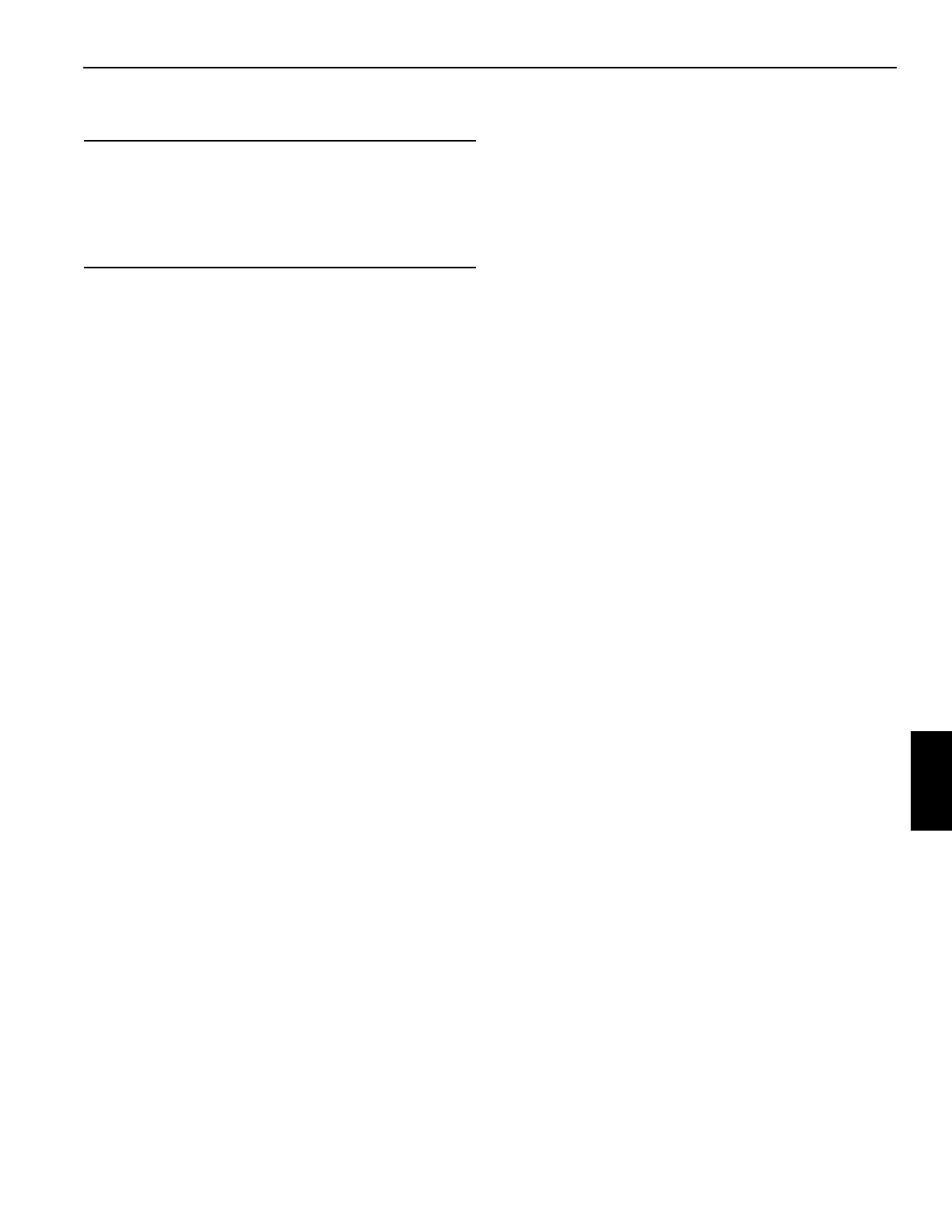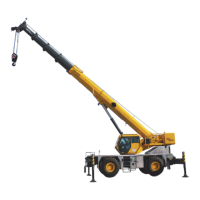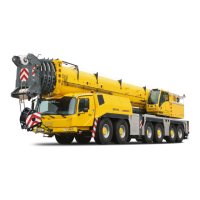7-23
GRT8100 SERVICE MANUAL POWER TRAIN
Published 3/26/2018, Control # 596-05
Drive Shafts
Removal
1. Support the drive shaft being removed so it does not fall
when disconnected. If removing the coupling shaft or the
forward slip shaft, support the other shaft also.
2. If removing the coupling shaft, free its bearing from the
frame by removing two bolts, two locknuts, and four
washers.
3. Remove the bolts from the bearing cap on each end of
the drive line. Note the lengths of the bolts and if they
have lockwashers. Remove the drive line.
Installation
1. For any drive shaft which has mating marks (arrows),
align these mating marks to ensure proper phasing of
coupler yokes.
2. Position the drive shaft between the couplers on the two
components it is joining.
3. For the coupling shaft, secure its bearing to the frame
with bolts, locknuts, and washers.
4. Secure the drive shaft to the coupler with bolts. Torque
the bolts to 149 Nm to 164 Nm (110 lb-ft to 121 lb-ft).
Lubrication
The drive line slip joints require lubrication. Refer to
Lubrication, page 9-1.
TRANSMISSION/TORQUE CONVERTER
Description
The transmission/torque converter assembly is mounted to
the engine and is connected to the front and rear axles by
three drive shafts. The main hydraulic pump and hydraulic
pump number three are mounted on the torque converter.
Theory of Operation
The transmission and torque converter function together and
operate through a common hydraulic system. Therefore, it is
necessary to consider both units in discussing operation.
With the engine running, the converter charging pump draws
oil from the transmission pump through the removable oil
suction screen and directs it through the pressure regulating
valve and oil filter.
The pressure regulating valve maintains pressure to the
transmission control for actuating the direction and speed
clutches. This requires a small portion of the total volume of
oil used in this system. The remaining volume of oil is
directed through the torque converter circuit to the oil cooler
and returns to the transmission for positive lubrication. This
regulator valve consists of a hardened valve spool operating
in a closely fitted bore. The valve spool is spring loaded to
hold the valve in a closed position. When a specific pressure
is achieved, the valve spool works against the spring until a
port is exposed along the side of the bore. This sequence of
events provides the proper system pressure.
After entering the converter housing, the oil is directed
through the reaction member support to the converter blade
cavity and exits in the passage between the turbine shaft and
reaction member support. The oil then flows out of the
converter to the oil cooler. After leaving the cooler, the oil is
directed to a fitting on the transmission. Then, through a
series of tubes and passages, lubricates the transmission
bearings and clutches. The oil then gravity drains to the
transmission sump.
The torque converter consists basically of three elements
and their related parts to multiply engine torque. The engine
power is transmitted from the engine flywheel to the impeller
element through the impeller cover. This element is the
pump portion of the hydraulic torque converter and is the
primary component which starts the oil flowing to the other
components which results in torque multiplication. This
element can be compared to a centrifugal pump, in that it
picks up fluid at its center and discharges at its outer
diameter.
The torque converter turbine is mounted opposite the
impeller and is connected to the output shaft of the torque
converter. This element receives fluid at its outer diameter
and discharges at its center. Fluid directed by the impeller
out into the particular design of blading in the turbine and
reaction member is the means by which the hydraulic torque
converter multiplies torque.
The reaction member of the torque converter is located
between and at the center of the inner diameters of the
impeller and turbine elements. Its function is to take the fluid
which is exhausting from the inner portion of the turbine and
change its direction to allow correct entry for recirculation
into the impeller element.
The torque converter will multiply engine torque to its
designed maximum multiplication ratio when the output shaft
is at zero rpm. Therefore, as the output shaft is decreasing in
speed, the torque multiplication is increasing.
The shift control valve assembly consists of a valve body
with selector valve spools. A detent ball and spring in the
selector spool provides one position for each speed range. A
CAUTION
Do not disassemble drive lines when removing them from
the crane. Dirt can enter the spline and cannot be purged.
In addition, the drive lines are assembled in a specific
orientation when manufactured and can easily be
incorrectly reassembled.

